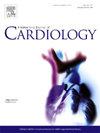A new simple chronic heart failure prognostic index based on five general parameters
IF 3.2
2区 医学
Q2 CARDIAC & CARDIOVASCULAR SYSTEMS
引用次数: 0
Abstract
Background
Prognostic prediction in heart failure (HF) is challenging and no single marker has proven effective. We propose an index based on B-type natriuretic peptide (BNP) and four widely available parameters.
Methods
We retrospectively analyzed adult outpatients with chronic HF with systolic dysfunction followed from January 2012 to December 2020. The new proposed index was calculated based on 5 parameters measured at the index visit. BASIC index = (BNP*(age)2) / (serum sodium*hemoglobin*estimated glomerular filtration rate). Patients were followed-up until January 2023; the primary endpoint was all-cause mortality. A receiver operator curve was used to assess the association of the index with outcome; a cut-off was chosen based on the curve. We used a Cox-regression analysis to determine the prognostic value of the index. Adjustments were made considering established prognostic predictors.
Results
We studied 1065 patients. Mean age was 71 years, 65.8 % were male, 45.3 % had ischemic HF and 47.2 % had severe systolic dysfunction. During a 47-months median follow-up, 545 patients died (51.2 %). Median BASIC index: 11.7 (3.5–33.7). The area under the curve was 0.73 (0.70–0.76) vs 0.69 (0.66–0.72) for BNP, p < 0.001. The best cut-off value was 9.3; sensitivity = 71.4 %, specificity = 62.3 %, positive predictive value = 66.5 and negative predictive value = 67.5 %. Patients with a BASIC index above 9.3 had a multivariate-adjusted HR of all-cause mortality = 2.70 (2.20–3.22).
Conclusions
The incorporation of age, hemoglobin, serum sodium, glomerular filtration rate and BNP in an index significantly improves prognostic prediction when compared to BNP alone. Patients with a BASIC index above 9.3 have an almost 3-fold higher death-risk.

求助全文
约1分钟内获得全文
求助全文
来源期刊

International journal of cardiology
医学-心血管系统
CiteScore
6.80
自引率
5.70%
发文量
758
审稿时长
44 days
期刊介绍:
The International Journal of Cardiology is devoted to cardiology in the broadest sense. Both basic research and clinical papers can be submitted. The journal serves the interest of both practicing clinicians and researchers.
In addition to original papers, we are launching a range of new manuscript types, including Consensus and Position Papers, Systematic Reviews, Meta-analyses, and Short communications. Case reports are no longer acceptable. Controversial techniques, issues on health policy and social medicine are discussed and serve as useful tools for encouraging debate.
 求助内容:
求助内容: 应助结果提醒方式:
应助结果提醒方式:


